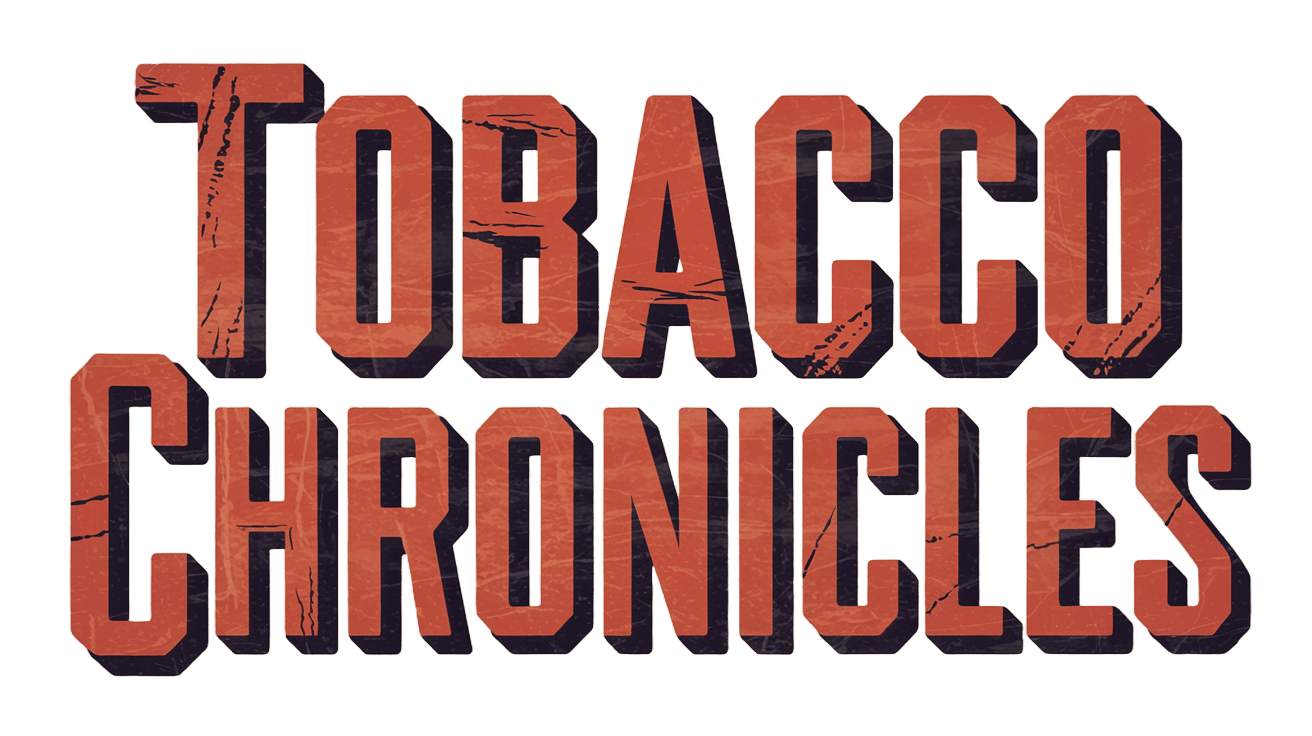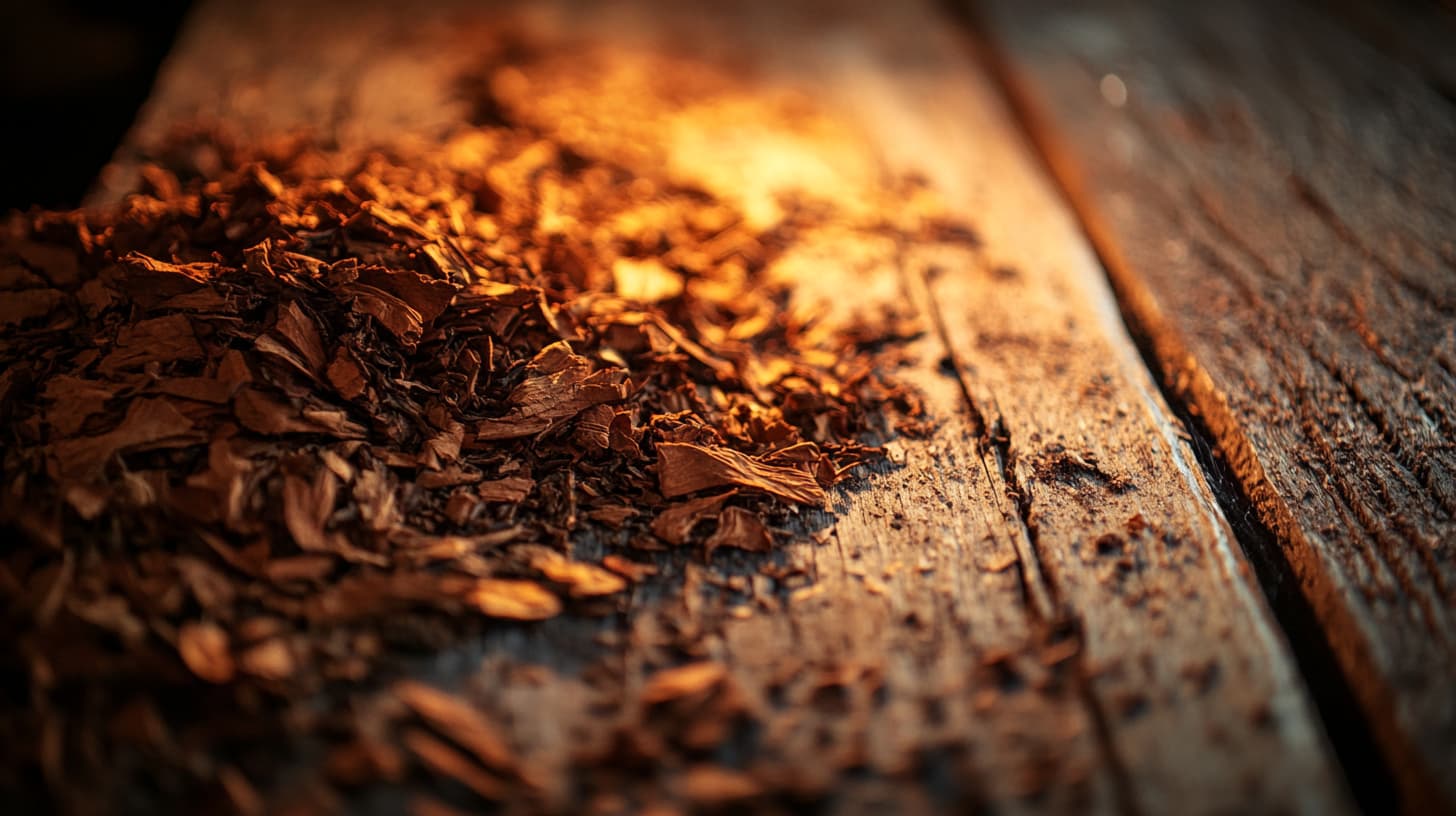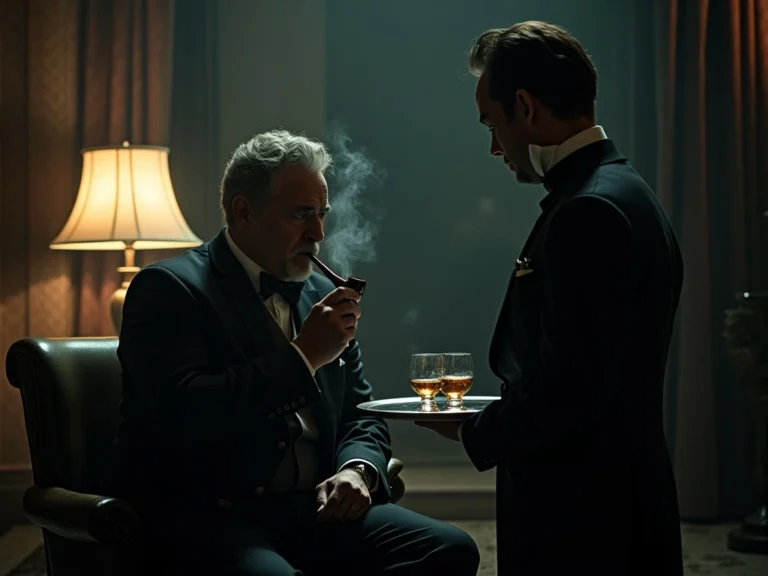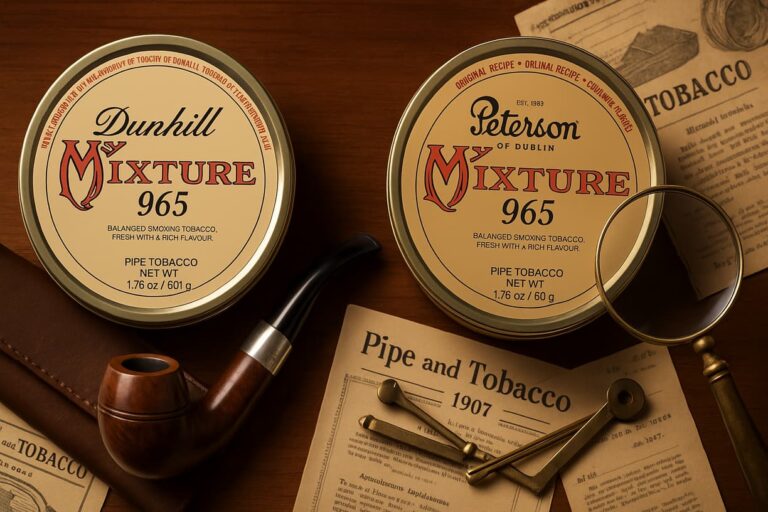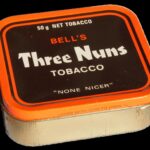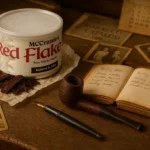There are certain moments in a pipe smoker’s journey that become etched in memory forever, and cracking open this aged tin of McClelland’s 5100 Red Cake is undoubtedly one of them. As I carefully pry off the lid of this 2010 vintage tin that’s been quietly aging in my cellar for over a decade, I’m filled with both anticipation and reverence. This isn’t just any tobacco—this is a piece of pipe smoking history, a relic from a company that defined excellence in Virginia blending for four decades before closing their doors forever in 2018. What I’m about to experience can never be replicated, never be purchased again, and represents the pinnacle of what American pipe tobacco could achieve when crafted with uncompromising dedication to quality. This is my journey through one of the most legendary Virginia blends ever created, aged to perfection and ready to tell its story one final time.
A Glimpse into History: The Enduring Legacy of McClelland’s 5100 Red Cake
Before I dive into this smoking experience, I need to set the stage for what made McClelland’s 5100 Red Cake so special. When Mike and Mary McNiel founded McClelland Tobacco Company in 1977, they started with a simple philosophy that would define their legacy: use only the finest tobacco leaf and process it with meticulous attention to detail. What began as a basement operation grew into one of the most respected names in pipe tobacco, and 5100 Red Cake became their flagship Virginia offering.
I remember when this tobacco was readily available on every tobacconist’s shelf, priced as an everyday smoke that anyone could afford. But even then, experienced smokers recognized something special about McClelland’s approach. Mike McNiel personally selected every crop of Virginia tobacco, and their proprietary processing involved pressing the leaf into large wooden barrels under immense pressure, creating what they called “matured cake.” This process, combined with careful aging, transformed ordinary Virginia leaf into something extraordinary.
5100 Red Cake was described by McClelland as “a sweet, exceptionally soft, fully-rubbed Matured Cake” that worked both as a blending tobacco and a fine straight smoke. But what truly set it apart was its distinctive character—a tangy sweetness that developed through their unique processing, and most famously, that unmistakable “ketchup” tin note that became legendary among pipe smokers. This wasn’t a flaw; it was the natural result of McClelland’s fermentation and aging process.
The tragic end came in early 2018 when McClelland announced they were closing after more than four decades. The decision wasn’t financial—it was about quality. Mike McNiel explained that available Virginia crops no longer met their exacting standards. Within hours of the announcement, every remaining tin had been snapped up by collectors and enthusiasts. Today, a single tin commands prices that would have seemed unthinkable just a few years ago, transforming what was once an affordable everyday smoke into a precious commodity.
The Aged Revelation: Tin Note & Appearance
The moment I break the seal on this aged tin is nothing short of ceremonial. That satisfying pop as the lid comes free immediately transports me back to a time when this tobacco was readily available. But what greets me isn’t the 5100 Red Cake I remember from fresh tins—this is something that has been transformed by over a decade of patient aging into something even more remarkable.
The tin note that rises from the opened container is a symphony of complexity that has evolved far beyond its original character. Where a fresh tin displayed that famous “ketchup” aroma in all its tangy glory, this aged version presents a more sophisticated bouquet. The initial hit is still unmistakably McClelland—that distinctive fermented sweetness that made their Virginias instantly recognizable—but it has mellowed and deepened into something approaching perfection.
I’m immediately struck by rich, stewed fruit character that wasn’t present in fresh tobacco. There are notes reminiscent of dark cherries and figs that have been slowly cooked down into a concentrated essence. Beneath this lies a subtle spiciness, like nutmeg and cinnamon, that adds warmth and complexity to the overall aroma. The famous “ketchup” note is still there, but it has transformed from the sharp, vinegary tang I remember into something more akin to a fine aged balsamic vinegar—complex, sweet, and deeply satisfying.
There’s also a hint of that camphor-like quality that some people noticed in fresh tins, but it has integrated seamlessly into the overall profile, adding a cooling, almost menthol-like freshness that balances the sweetness beautifully. This evolution is exactly what I hoped for when I first cellared this tobacco—the harsh edges smoothed away by time, leaving only the essence of what made it special.
Visually, the tobacco tells the story of its journey through time. The ribbon cut remains consistent with McClelland’s signature processing—fine and uniform, designed for easy packing and even burning. However, the color has deepened considerably from the bright orange-red I remember to a rich, burnished copper that speaks of proper aging. Here and there, I can see the telltale signs of sugar crystallization—tiny white crystals that have formed as the natural sugars have concentrated over the years. These crystals are like finding diamonds in the rough, visual confirmation that this tobacco has been aging properly.
The moisture content is absolutely perfect—not too dry, not too moist, but with that ideal consistency that allows the tobacco to pack easily while retaining enough moisture to burn slowly and coolly. This is one of the advantages of properly stored aged tobacco; it reaches an equilibrium that fresh tobacco often lacks.
The Journey Through the Bowl: An Aged Smoke
Packing this aged 5100 Red Cake is a tactile pleasure that immediately sets it apart from fresh tobacco. The ribbon cut flows into my bowl with an almost liquid smoothness, settling into place with minimal effort. There’s no need for the careful attention to moisture content that fresh Virginia often requires—this tobacco knows exactly what it wants to do, and it does it with the confidence that only comes from years of patient aging.
The initial light reveals the first hints of what’s to come. Where fresh 5100 might have required some coaxing to establish an even burn, this aged version catches flame eagerly and settles into a steady, consistent burn that requires virtually no attention. The first few puffs deliver a gentle introduction to the tobacco’s character—a sweet, almost honeyed flavor that carries just a whisper of the tang that made this blend famous. But this is merely the opening movement of a much larger symphony.
As I progress into the middle third of the bowl, the true magic of aged Virginia tobacco begins to reveal itself. The flavors deepen and expand, developing layers of complexity that simply weren’t present in the fresh tobacco I remember. The sweetness evolves from simple honey into something more akin to molasses or brown sugar, with rich, caramelized notes that coat my palate in the most satisfying way. The tangy character that defined fresh 5100 Red Cake is still present, but it has transformed from a sharp, almost acidic bite into a sophisticated tartness that adds brightness and prevents the sweetness from becoming cloying.
The retrohale is where this aged tobacco truly shines, delivering a cascade of flavors that dance across my nasal passages with remarkable clarity. There’s a distinct fruitiness that emerges—notes of dried apricots, raisins, and that fig-like character that was hinted at in the tin note. Beneath this fruit medley lies a subtle earthiness, a grounding note that speaks to the tobacco’s agricultural origins while adding depth and complexity to the overall profile. The spice notes I detected in the tin note translate beautifully to the smoke, with gentle hints of cinnamon and nutmeg that add warmth without overwhelming the delicate Virginia character.
What strikes me most about this aged 5100 Red Cake is its consistency throughout the bowl. Where some tobaccos might start strong and fade, or begin mildly and build to overwhelming intensity, this blend maintains a steady, satisfying character from first light to final puff. The burn remains cool and even, never threatening to bite or become harsh, even when I push it harder than I probably should. This forgiving nature was one of the hallmarks of McClelland’s Virginia blends, and aging has only enhanced this characteristic.
The strength level sits comfortably in the medium range—substantial enough to satisfy without overwhelming my palate or delivering an unwanted nicotine hit. This makes it an ideal all-day smoke, equally suitable for a contemplative morning bowl or a relaxing evening session. The room note is pleasant and unobtrusive, carrying hints of the tobacco’s sweetness without becoming cloying or offensive to others nearby.
As the bowl reaches its conclusion, the tobacco continues to deliver flavor right down to the bottom of the chamber. There’s no harsh finish, no bitter dottle, just a gentle fade that leaves my palate satisfied and already anticipating the next bowl. This is the mark of truly exceptional tobacco—the ability to provide a complete, satisfying experience that leaves me wanting more rather than feeling overwhelmed or fatigued.
The Wisdom of Time: The Aged Advantage
The transformation that time has wrought upon this McClelland 5100 Red Cake serves as a masterclass in why I invest so much effort in cellaring tobacco. What began as an excellent Virginia blend has evolved into something approaching transcendence, demonstrating the remarkable alchemy that occurs when quality tobacco is given the time and proper conditions to reach its full potential.
The most obvious change is in that famous “ketchup” tin note that made McClelland Virginias so distinctive. In fresh tobacco, this aroma could be polarizing—I loved it immediately, but I knew others found it off-putting until they developed an appreciation for its unique character. Time has mellowed this sharpness into something universally appealing, transforming what was once a tangy, almost vinegary scent into a complex bouquet of stewed fruits and gentle spices. The aging process has allowed the various aromatic compounds to marry and integrate, creating a harmony that simply wasn’t possible in the fresh tobacco.
The flavor transformation is even more dramatic. Fresh 5100 Red Cake was known for its bright, sometimes sharp Virginia character—a tobacco that could bite if not treated with respect, particularly by inexperienced smokers. This aged version has shed all traces of harshness while retaining and even enhancing the characteristics that made it special. The sweetness has deepened from bright and sometimes one-dimensional to rich and complex, with layers of caramelized sugar, dried fruits, and subtle spices that reveal themselves gradually throughout the smoking experience.
Perhaps most importantly, the aging process has enhanced the tobacco’s natural balance. Virginia tobaccos are prized for their ability to showcase the pure essence of the tobacco leaf, but achieving perfect balance between sweetness, acidity, and complexity is a delicate art. Time has allowed this 5100 Red Cake to find its equilibrium, creating a smoking experience that feels effortless and natural rather than forced or artificial. Every element is in perfect proportion, from the initial sweetness through the tangy middle notes to the satisfying, clean finish.
The physical changes in the tobacco are equally significant. The development of sugar crystals isn’t merely cosmetic—it represents a concentration of the natural sugars that gives aged Virginia its distinctive character. These crystals dissolve during smoking, providing bursts of sweetness that punctuate the overall flavor profile. The darkening of the leaf color indicates the chemical reactions that have occurred during aging, the same processes that give aged wines and spirits their complexity and depth.
For those of us fortunate enough to have cellared McClelland tobaccos before the company’s closure, this aged 5100 Red Cake represents not just a superior smoking experience, but a connection to a lost era of American pipe tobacco blending. It’s a reminder of what was possible when quality was the primary concern, when blenders were willing to invest the time and effort necessary to create truly exceptional tobacco. In a world where so many modern blends prioritize convenience and cost-effectiveness over character and complexity, this aged McClelland stands as a testament to the heights that pipe tobacco can achieve when crafted with skill, patience, and an uncompromising commitment to excellence.
Conclusion: A Legacy Savored
As I set down my pipe after this journey through aged McClelland 5100 Red Cake, I’m struck by a profound sense of both satisfaction and melancholy. Satisfaction because I’ve just experienced one of the finest Virginia tobaccos ever created at its absolute peak, aged to perfection and delivering every nuance of flavor that made McClelland legendary. Melancholy because this experience can never be replicated—when my cellared tins are gone, they’re gone forever, taking with them a piece of pipe tobacco history that can never be recovered.
This aged 5100 Red Cake represents everything that made McClelland special: the commitment to quality, the distinctive character that made their tobaccos instantly recognizable, and the aging potential that transformed good tobacco into something truly exceptional. It’s a reminder of why so many of us mourned the company’s closure and why McClelland tobaccos continue to command premium prices on the secondary market. This isn’t just nostalgia or collector fever—it’s recognition of genuine quality that has become increasingly rare in today’s market.
For those who never experienced McClelland tobaccos in their heyday, this review might seem like an exercise in futility—why write about something that can no longer be obtained? But I believe there’s value in documenting these experiences, in preserving the memory of what was possible when pipe tobacco was crafted with true artistry. Perhaps future blenders will read these words and be inspired to pursue the same level of excellence that Mike and Mary McNiel achieved. Perhaps current smokers will be motivated to properly cellar the quality tobaccos that are still available, understanding that time can transform good tobacco into something truly magical.
McClelland’s 5100 Red Cake, particularly in its aged form, stands as a monument to the golden age of American pipe tobacco blending. It reminds me that tobacco is an agricultural product capable of extraordinary complexity and beauty when treated with the respect and skill it deserves. In a world of mass-produced commodities and artificial flavoring, this aged Virginia offers a glimpse of what we’ve lost—and what we might achieve again if we’re willing to prioritize quality over convenience, character over cost, and patience over instant gratification.
The legacy of McClelland 5100 Red Cake lives on in every carefully preserved tin, in every reverent review, and in the memories of those who were fortunate enough to experience it. It serves as both a benchmark for excellence and a reminder that the best things in life—whether tobacco, wine, or wisdom—often require time to reach their full potential. In an age of instant everything, perhaps that’s the most valuable lesson this aged Virginia has to offer.
